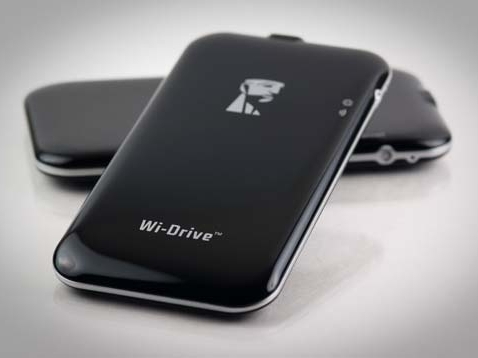TechRadar Verdict
Pros
- +
Slim and light so very portable
- +
Internet connection bridging
- +
Many devices can access files simultaneously
- +
Free upgrades coming
- +
Web browser access for non-iOS devices
Cons
- -
Incredibly expensive price per GB
- -
Relatively low capacities
- -
Mediocre iOS app
- -
Can't (yet) edit files
- -
No Android support
Why you can trust TechRadar
Sooner or later, you're going to run out of storage space on your iPhone, iPad or iPod touch. And because you've got no way of adding more inside the device, you're faced with clearing stuff off – or adding some memory externally.
The Kingston Wi-Drive gives you that added capacity: 16GB (£89) or 32GB (£119) of external storage, in a slim and very light unit that you connect to over Wi-Fi.
It's one of a growing number of wireless iPod storage products. The Seagate GoFlex Satellite and Hitachi G-Connect both do this as well. But, where these two offer 500GB hard drives, the Kingston Wi-Drive uses embedded flash memory.
While this makes it smaller, lighter and more robust than the hard drive-sporting models, it's also massively more expensive per gigabyte (the Wi-Drive will set you back £5.56 per GB for the 16GB version or £3.72 for the 32GB version, while the GoFlex Satellite costs just 32p per GB).

You access the contents of the Wi-Drive via its free iOS app or in a web browser, meaning you can get at your files on most Wi-Fi-capable devices, including BlackBerry smartphones and Windows Phone 7 handsets.
The Wi-Drive's exactly the same width and thickness as the iPhone, and only marginally longer. It weighs in at 85g.
The standard Android web browser didn't allow us to access the files, but an Android app is due out towards the end of the year.
Sign up for breaking news, reviews, opinion, top tech deals, and more.
